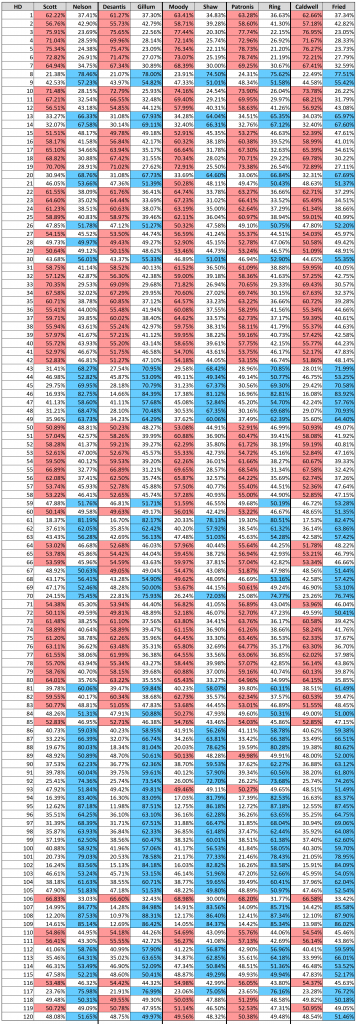Florida had five statewide races on its ballot in 2018. In addition to the high profile US Senate and Gubernatorial contests – Florida held elections for its Attorney General, Chief Financial Officer, and Agriculture Commissioner. All of these races were relatively close. The biggest gap was the GOP’s 6% win for Attorney General. CFO was decided by 3% and the remaining were all decided by less than 1%. This marked one of the closest election seasons in Florida history.
I broke those races down by State House district to see how the district breakdown compares to the statewide margins.
For comparison, this is how the districts voted in the 2016 Presidential Election.
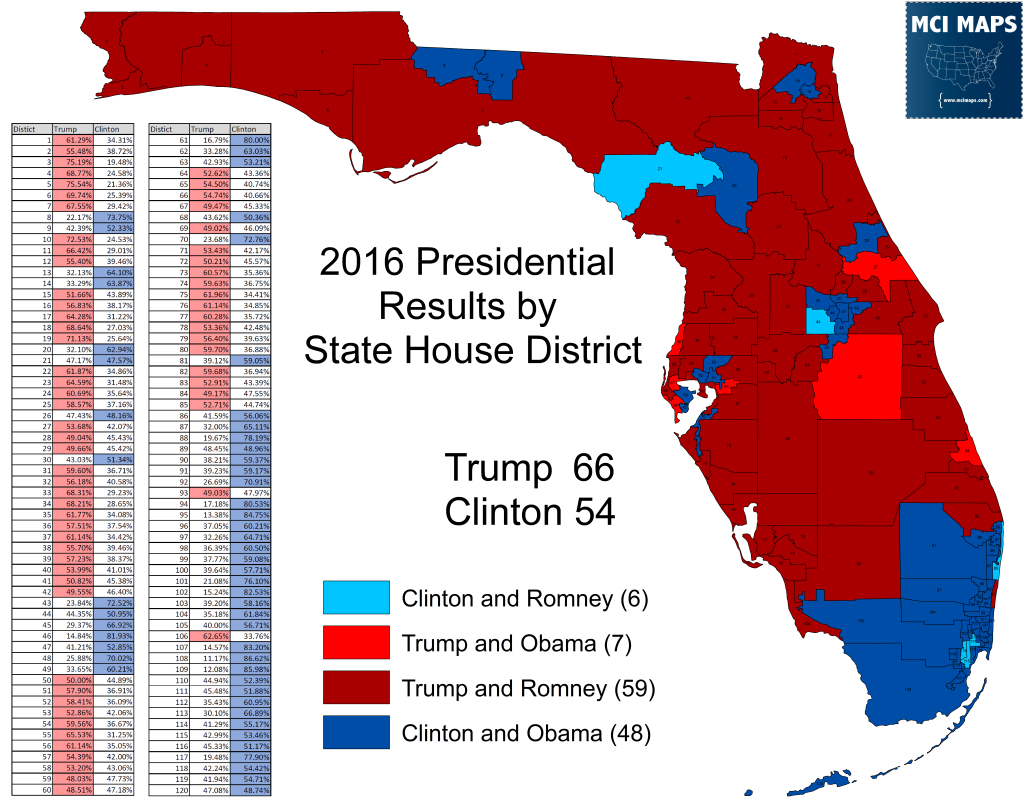
In the 2016 Election, the 1% Trump win led to a 12 seat gap in the number of seats Clinton and Trump won. This is one of the many confirmations that the house map is a GOP gerrymander. In 2018, there were similar results.
2018 Statewide Races
The first election was US Senate, which saw Rick Scott beat Bill Nelson by just 10,000 votes. Despite the narrow margin, Scott easily won a majority of the House seats; 64-56.
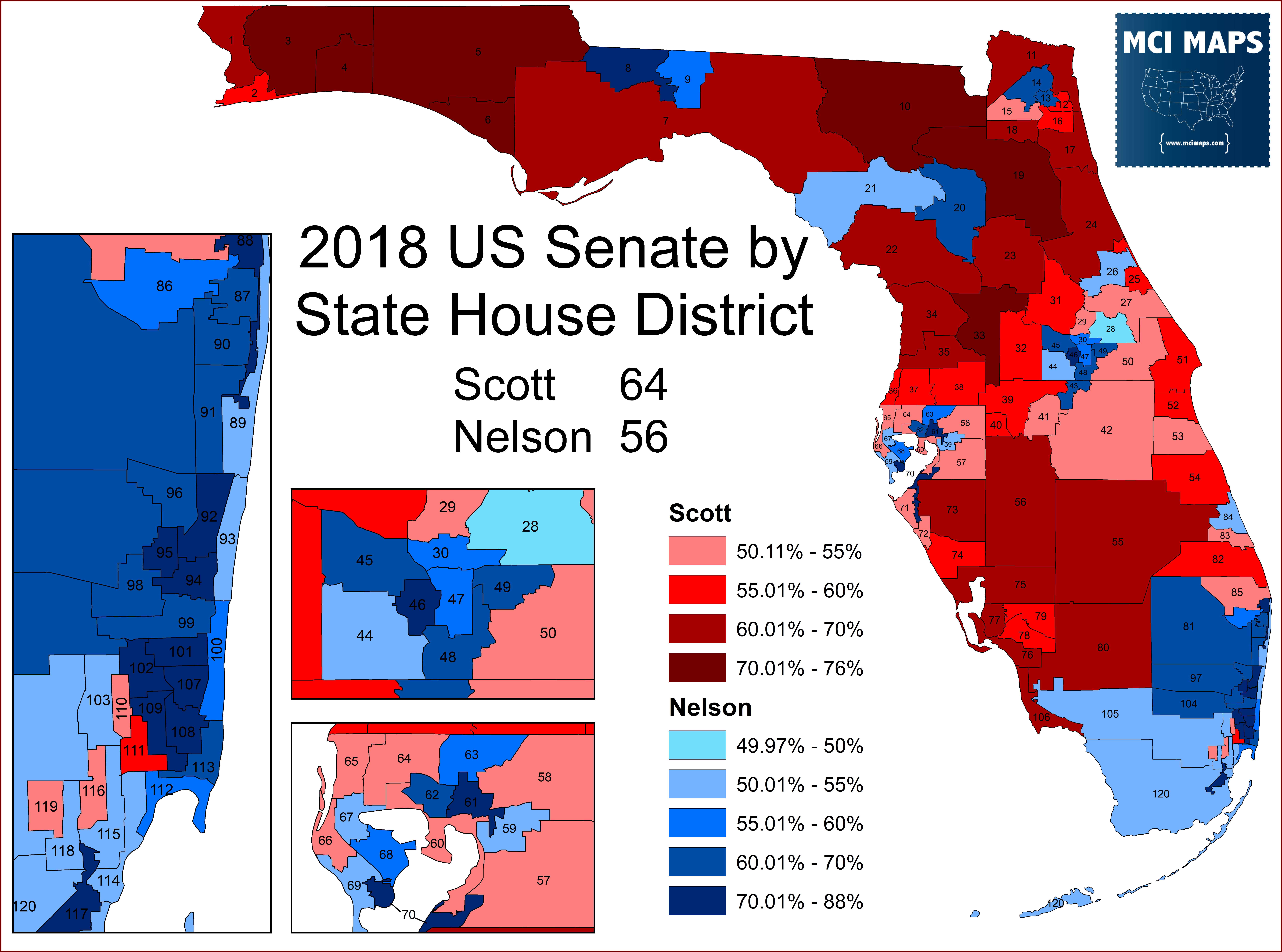
The Governor race was almost as close; with Ron DeSantis winning by just 40,000 votes. However, this led to an even bigger gap in the seat split – with DeSantis taking 67 districts.
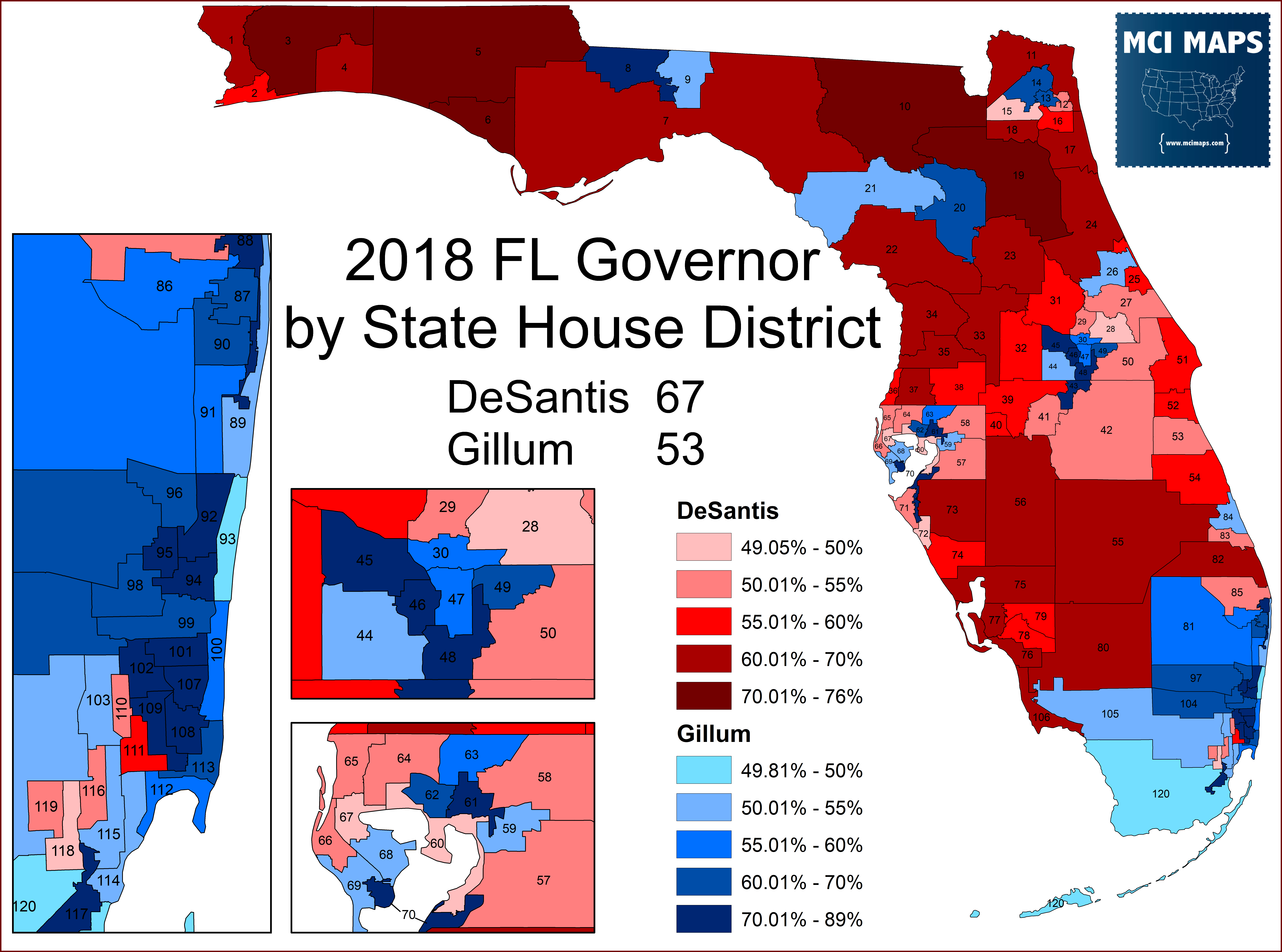
The Attorney General race was a 6% statewide margin, the biggest of the state. It resulted in a whopping 76 districts for Republican Ashley Moody, and only 44 for Democrat Sean Shaw.
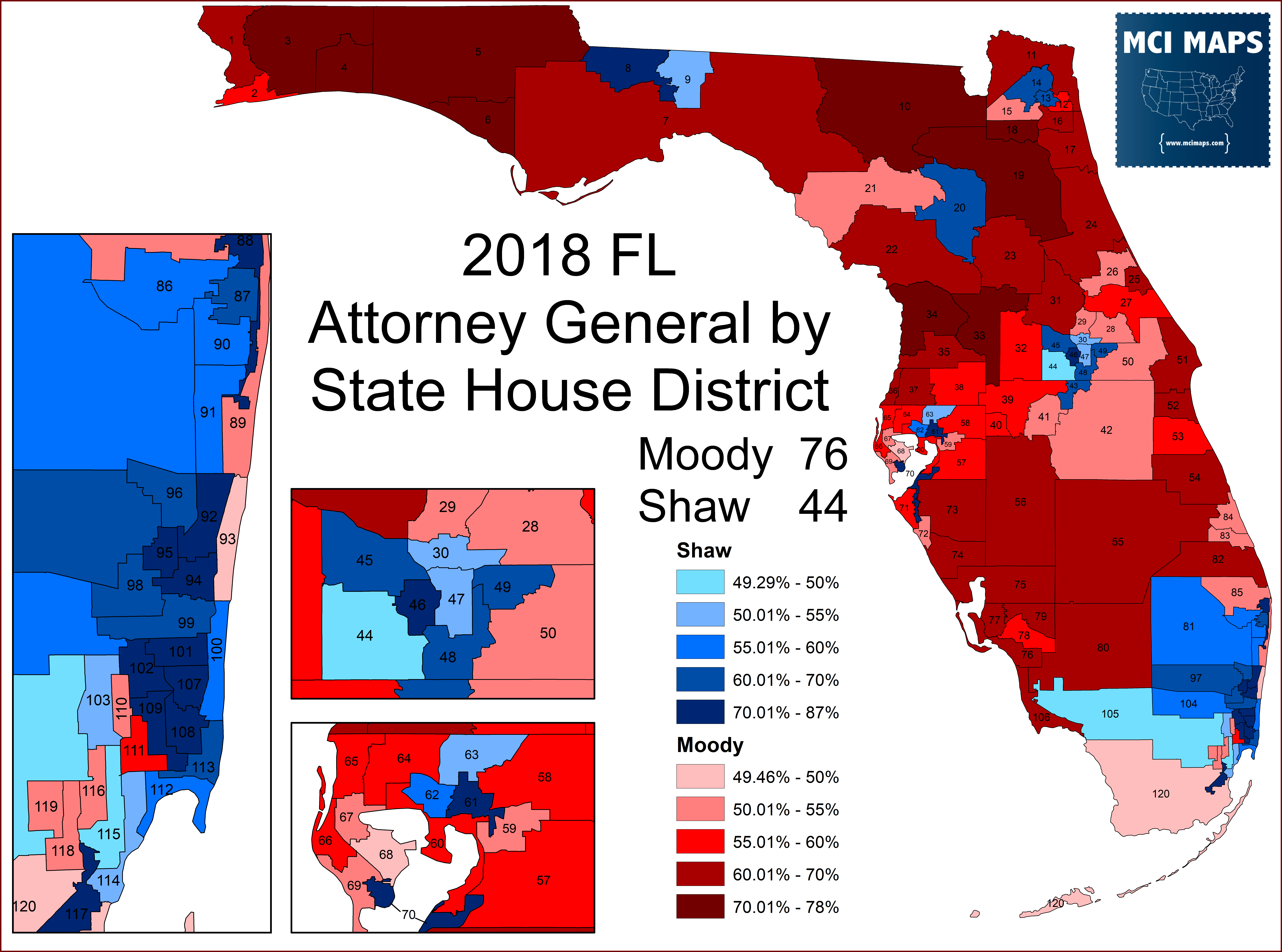
Democrat Jeremy Ring lost the CFO race to Republican Jimmy Patronis by 3%. The result was 71 seats to Patronis and 49 for Ring.
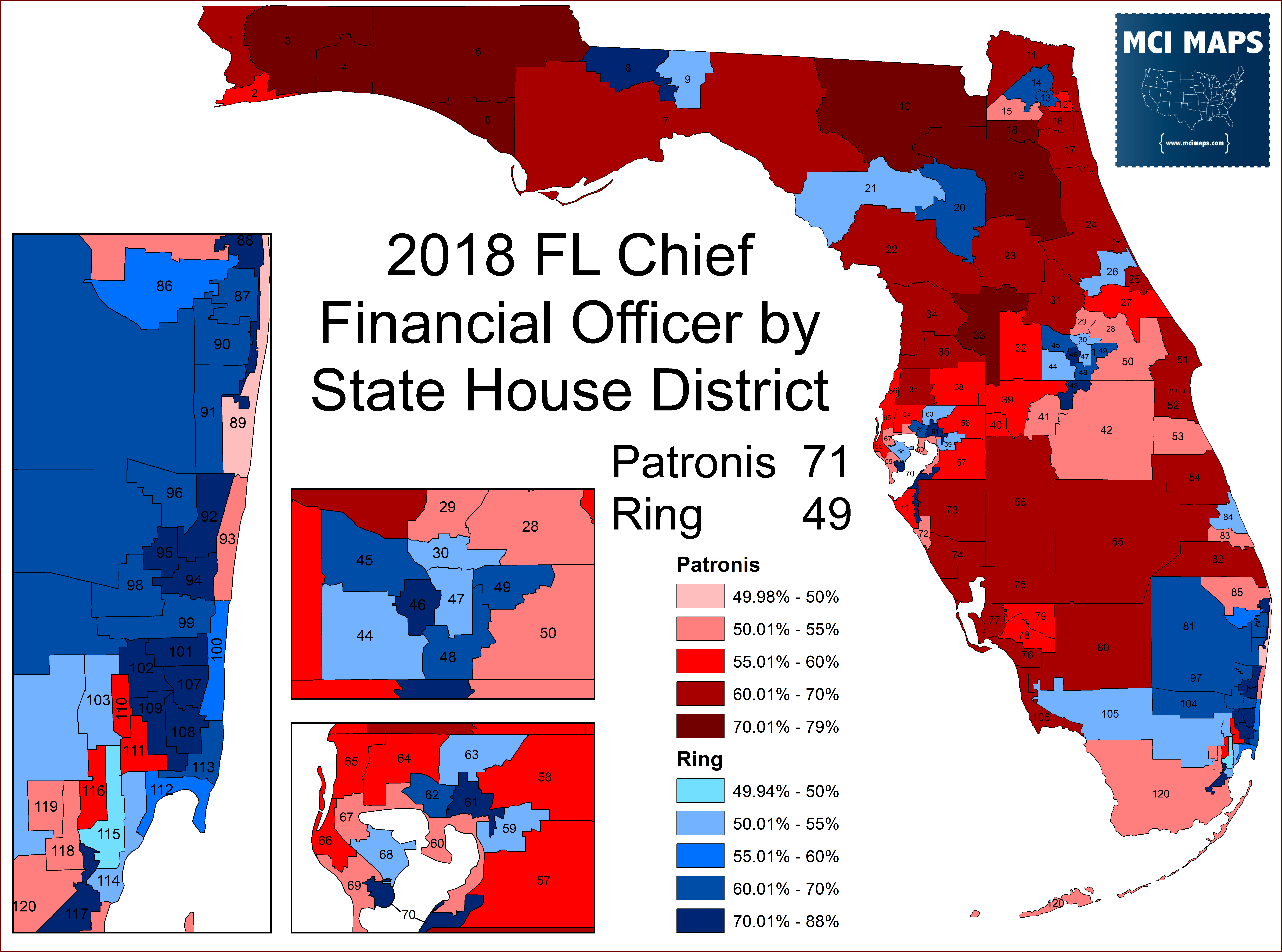
Finally, the Agriculture Commissioner Race; where Democrat Nikki Fried narrowly edged out Matt Caldwell by 5,000 votes. The Democratic win still results in Cadwell winning 63 seats to Fried’s 57.
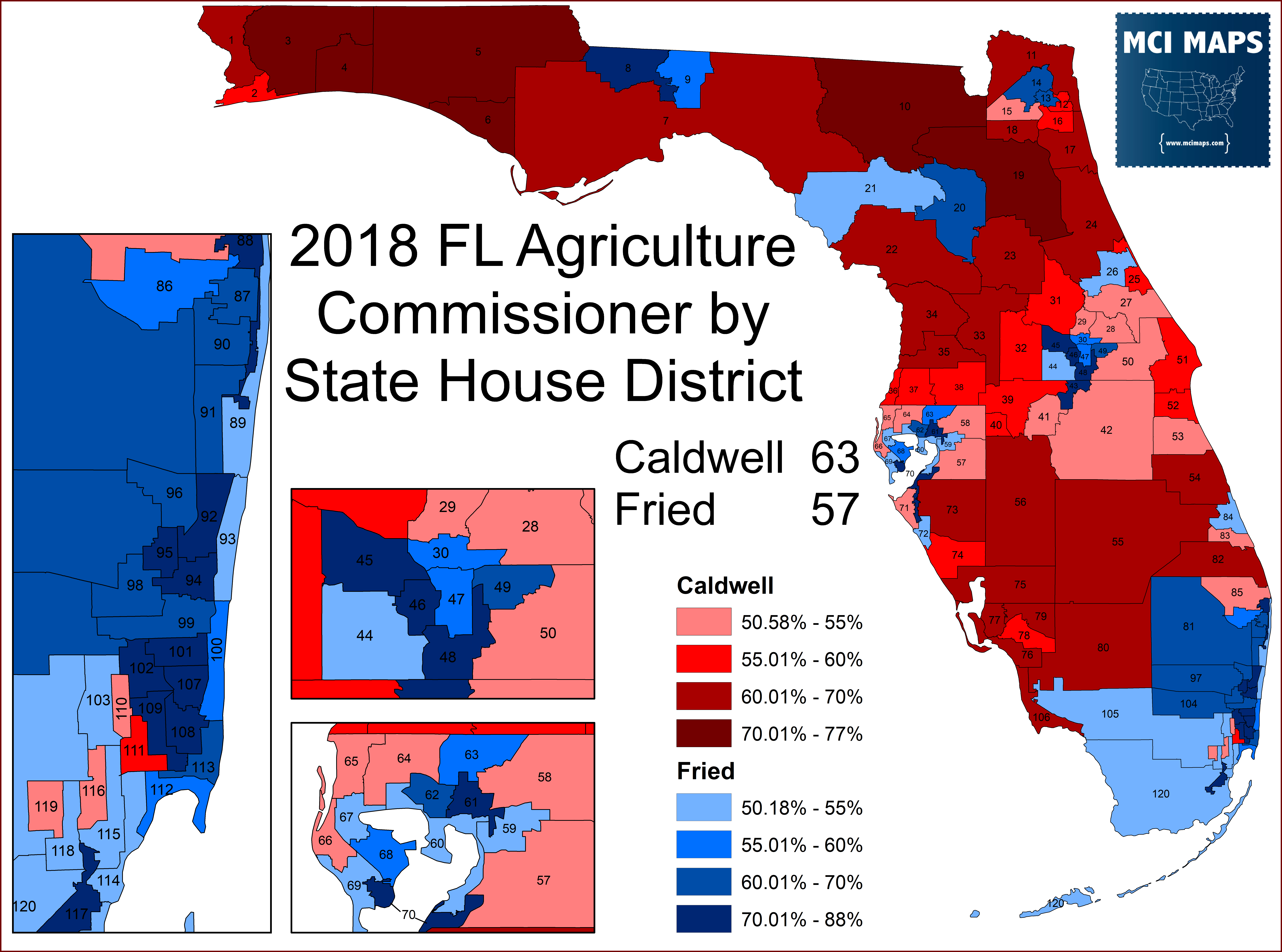
Overall, a vast majority of seats voted the same party for all of the races – with just a few splitting their tickets. Overall 62 districts voted for all 5 GOP candidates while just 44 did for the Democrats.
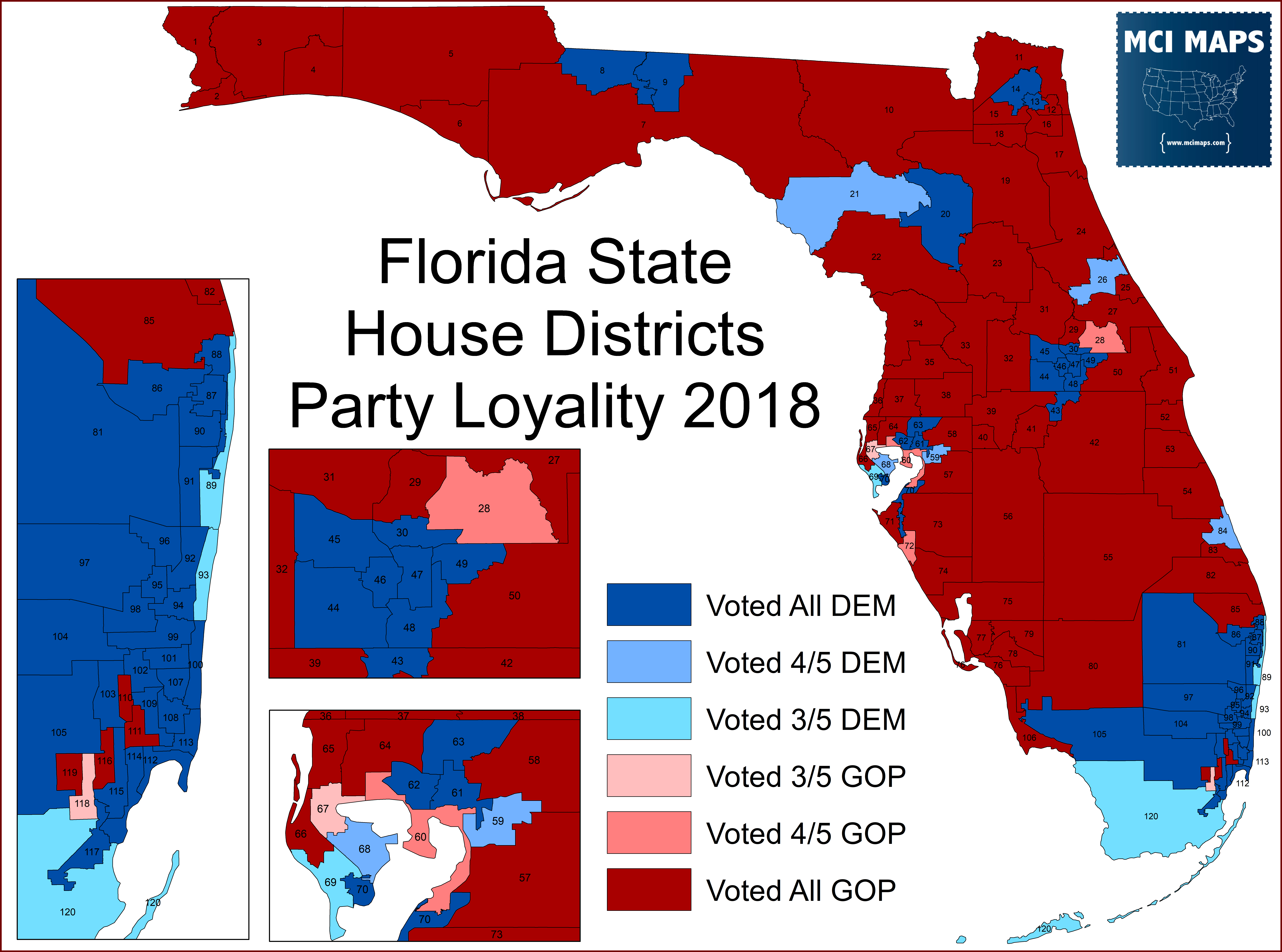
This alternative, hexagon map is for easier viewing.
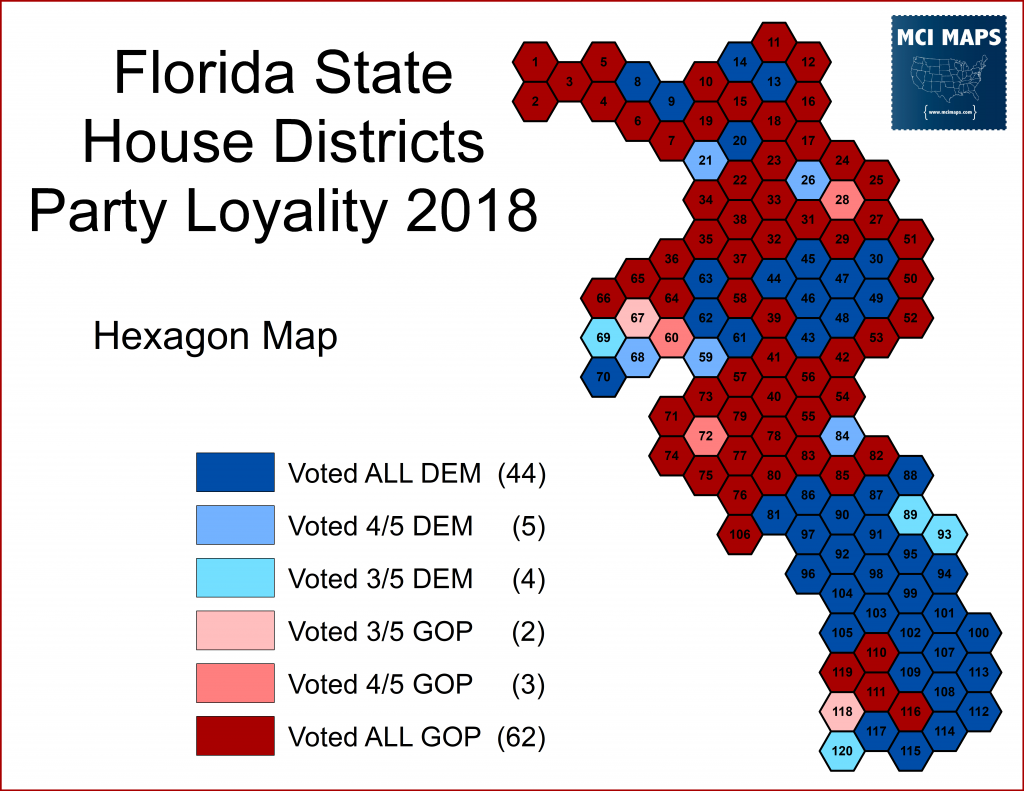
And the breakdown of all districts (click the image to enlarge) can be accessed here.
Comparing the results of each statewide race to the results of the seat breakdown show the map has a clear GOP advantage.

During 2015, Florida’s state senate and Congressional maps were redrawn. The results are much more equitable distributions of seats. The house map, however, still has clear issues.
The 2018 State House Elections
Despite few statewide wins, the Democrats of Florida still managed to make gains at the district level. Democrats won two congressional districts, and state senate seat, and netted five state house seats. This came from winning seven districts (all in Orlando, Tampa Bay, or Miami) and losing two incumbents.
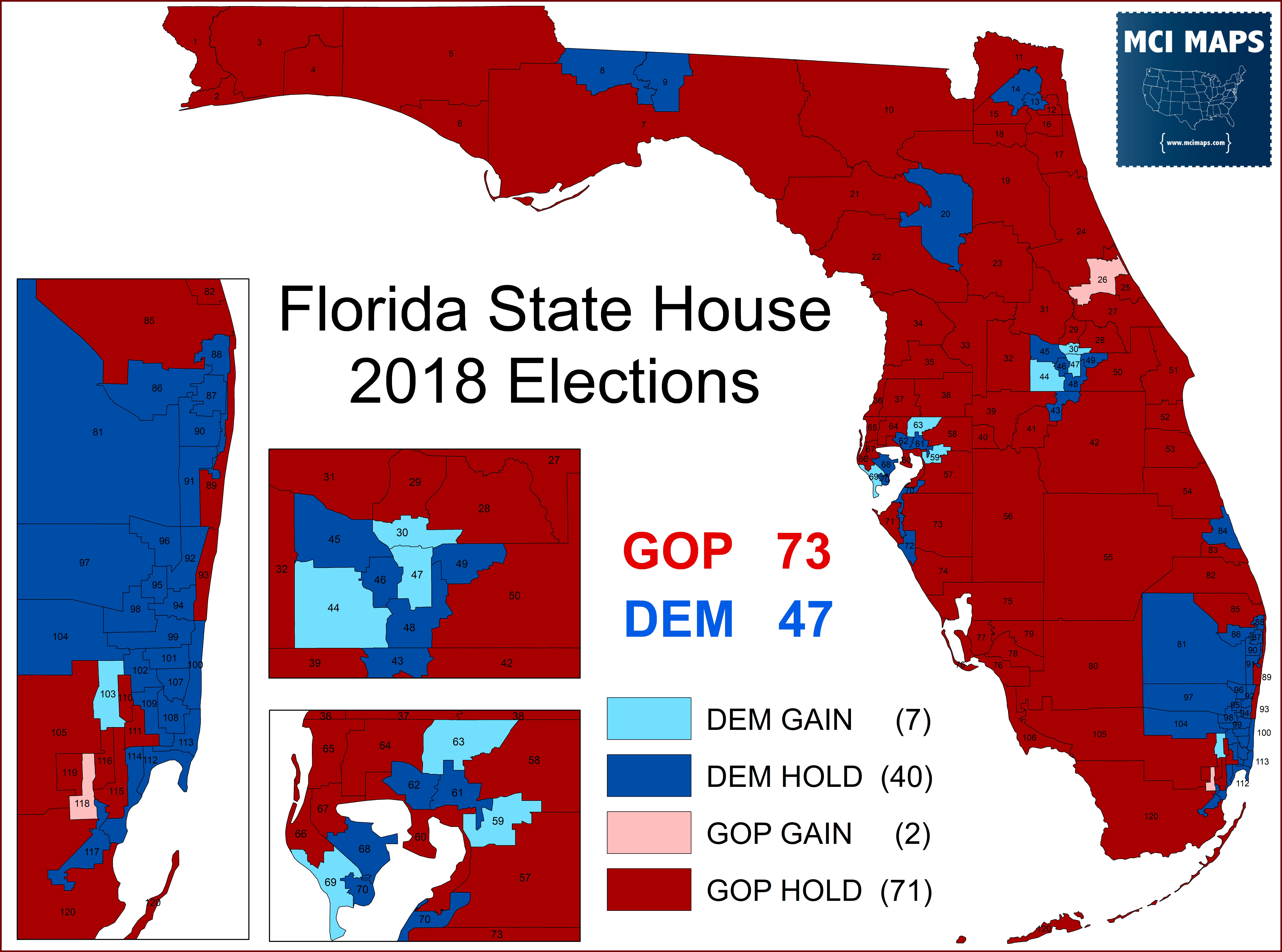
I’m going to look at each district that changed parties. Since I do not want to repeat myself, I’ll leave the details of the race in my 2018 State House rankings article. Check this link to see more details on each race.
Individual Races
The largest Democratic pickup was in HD47 – a majority white district in Orlando; a seat left open by Republican Mike Miller running for congress. Anna Eskamani, a longtime democratic activist, raised hundreds of thousands of dollars and toppled her Republican challenger easily to take the seat; becoming the first Iranian-American elected to the Florida House.
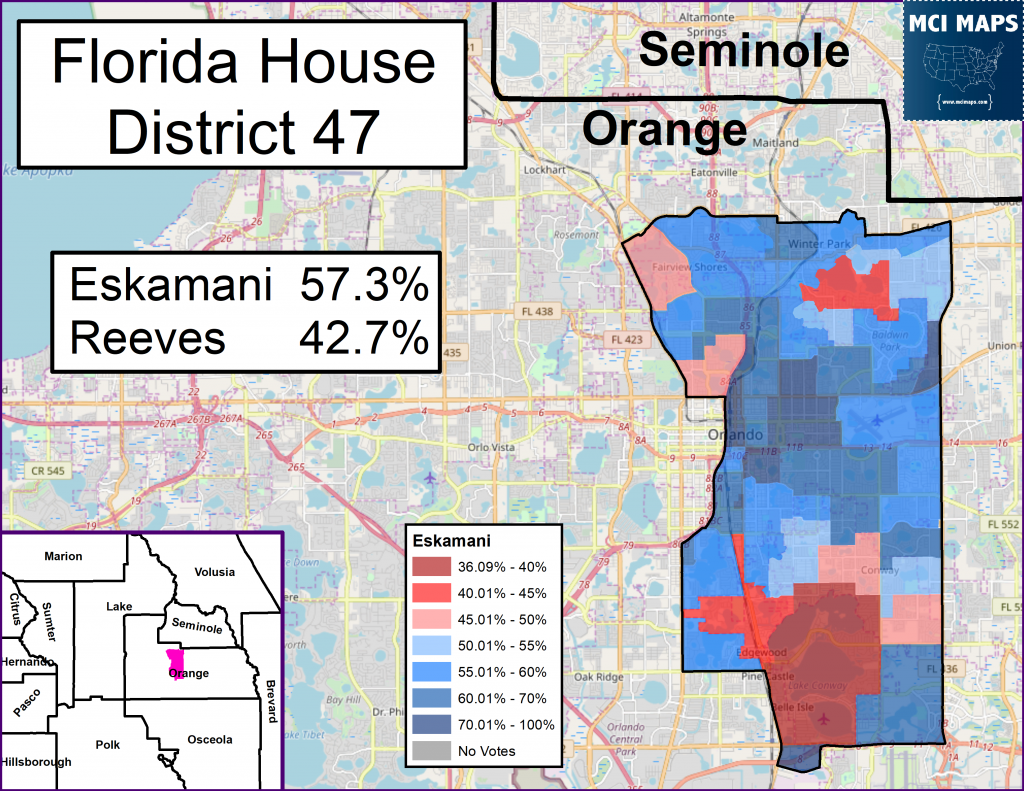
In the Orange and Seminole County based HD30, Democrats knocked off Incumbent Bob Cortes; a very strong incumbent in the seat. The district has continued to move to the left, like much of the region, and Cortes could not hold off get swept away by Maitland councilwoman Joy Goff-Marcil.
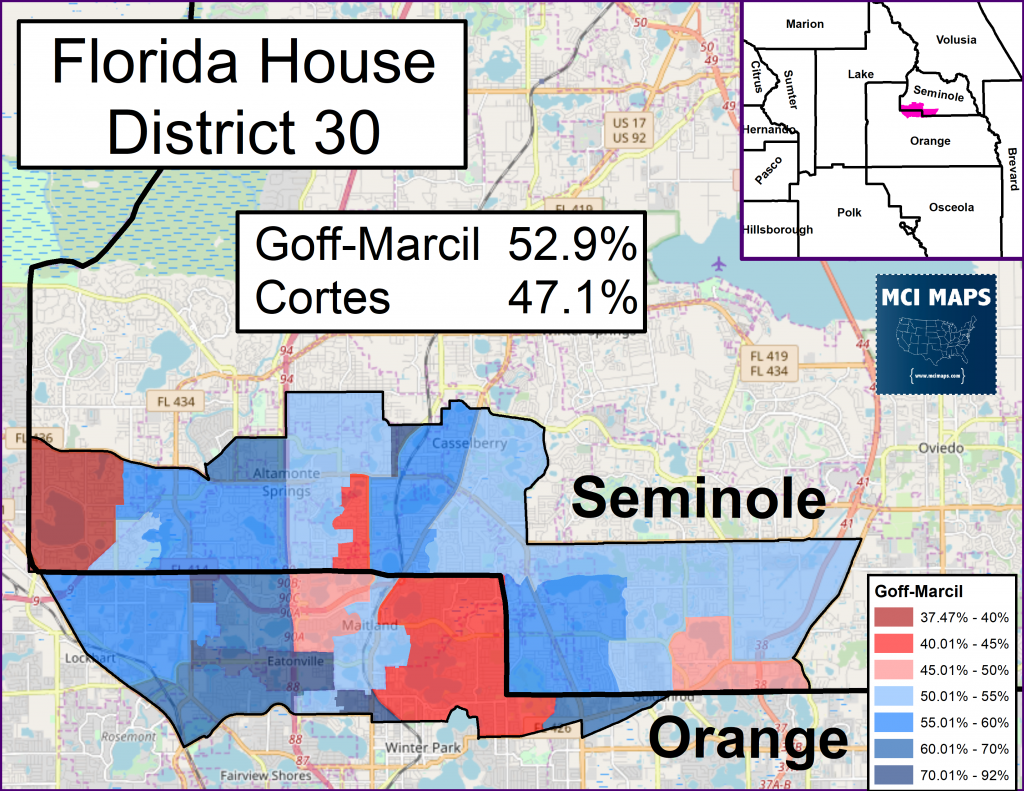
In 2017, a special election was held for HD44, which despite the Democrat dropping out late in the campaign and a replacement quickly being selected; was unusually close for a seat traditionally GOP. The suburban district had gone from standard GOP to backing Clinton in 2016. Former Democratic State Senator Geraldine Thompson opted to run for the seat and pulled off a narrow win against new Incumbent Robert Olszewski. This came as all five statewide democrats won HD44 – marking a swift change for this seat.

HD59 was opened when Incumbent Ross Spano ran for CD15. Democrat Adam Hattersley narrowly won this seat, which also narrowly backed Donald Trump. Hattersley has already announced he will not run for re-election and will instead challenge Spano in the 15th Congressional.
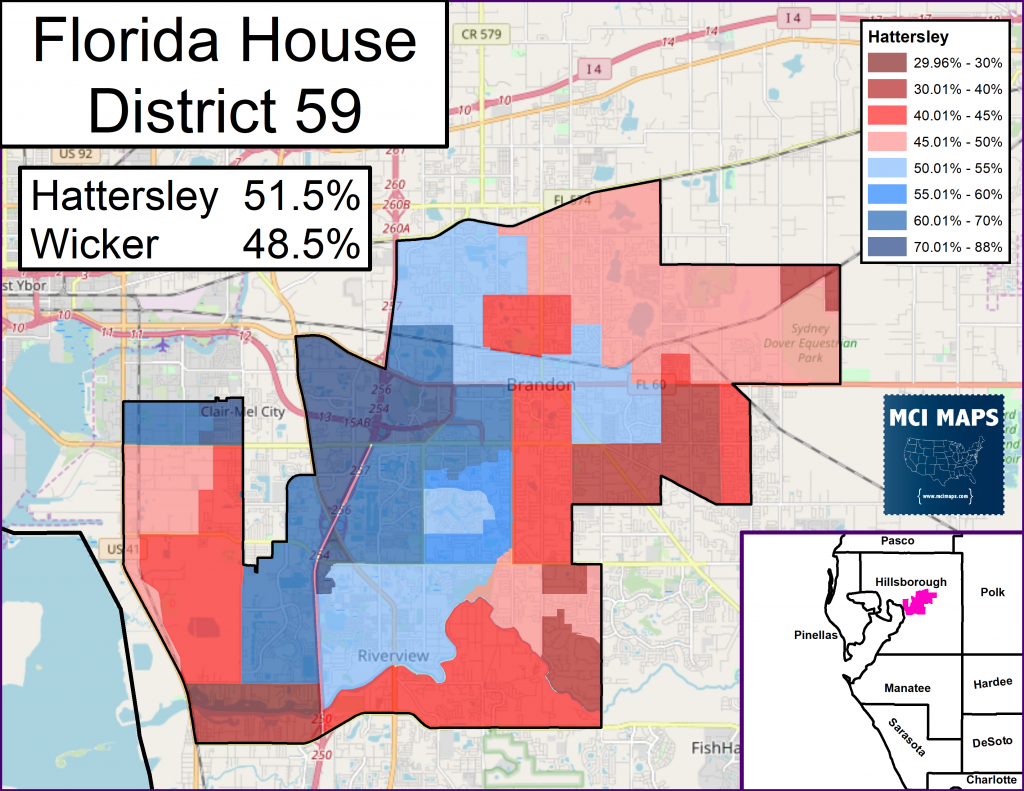
Republican Incumbent Shawn Harrison survived a major challenge in 2016, but could not hold off Democrat Fentrice Driskell. The growing North Tampa region and University of South Florida swept Harrison out.
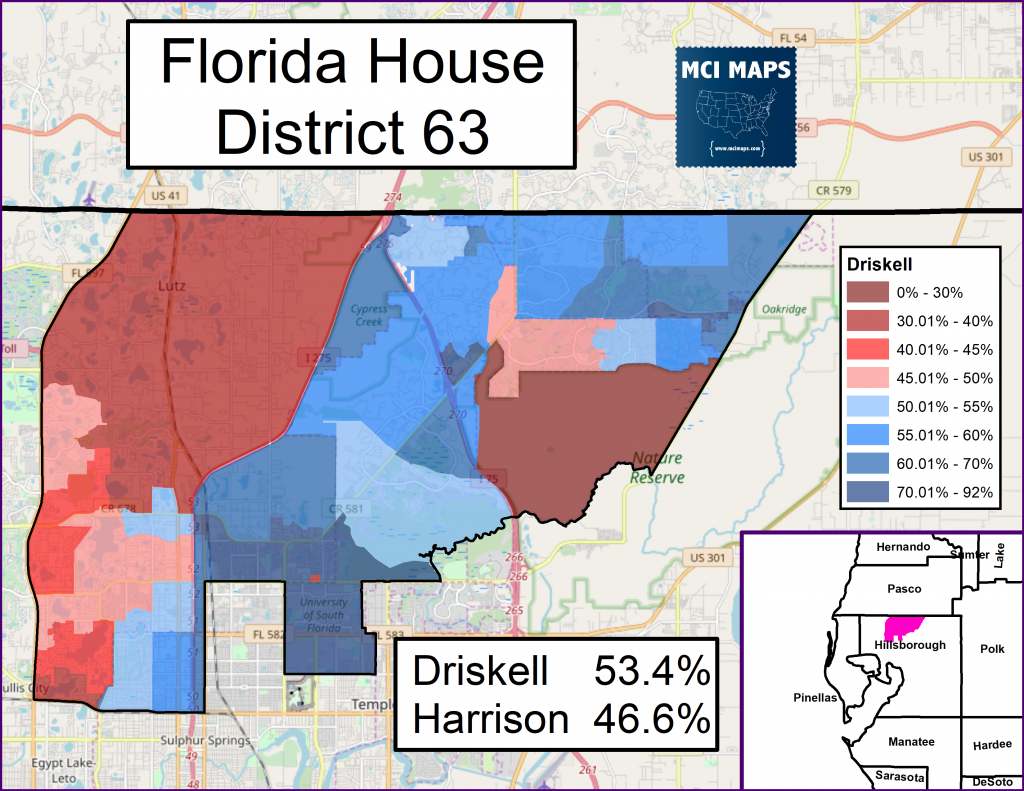
The swingish south Pinellas seat, which backed Obama by 4 and Trump by 3, and then split tickets in 2018, went to Democrat Jennifer Webb. The seat was opened after Incumbent Kathleen Peters ran for County Commission. Webb did very well inland and only lost along the more conservative, wealthy coastal towns.
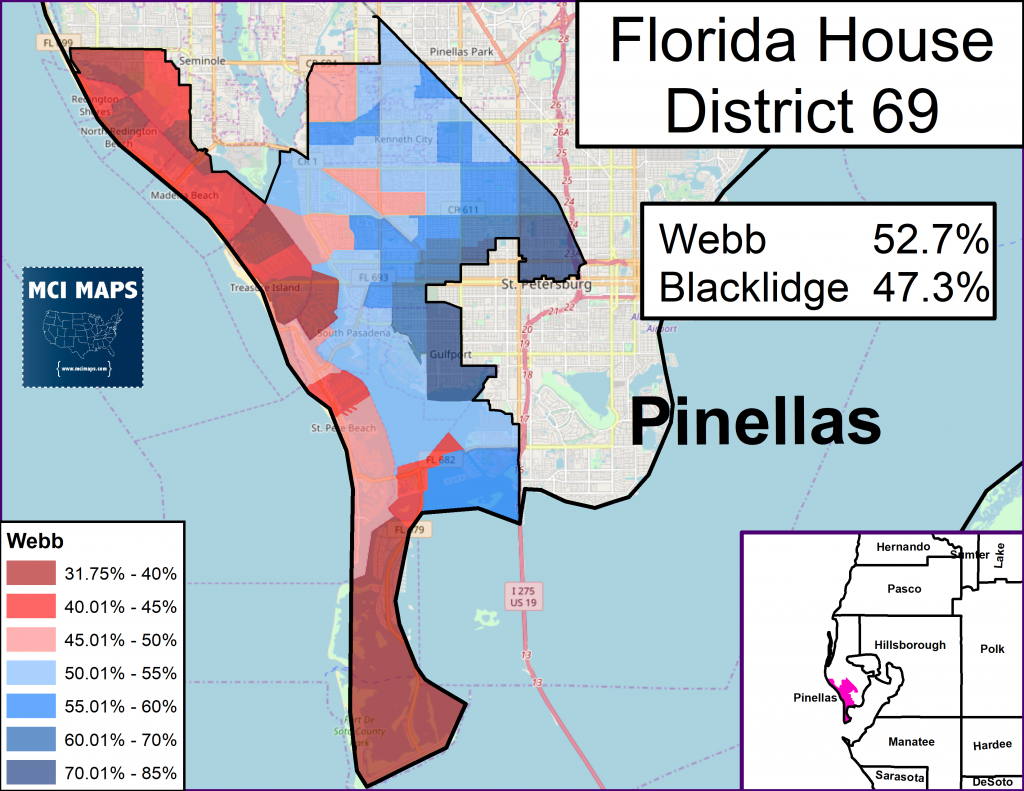
The final Democratic pickup was in district 103, located in North Dade. Democrat Cindi Polo won this majority-Hispanic seat by dominating in the Miramar and Doral regions; overcoming losses in the Cuban-heavy Hialeah region. This was a longtime Democratic target left open by Republican Incumbent Manny Diaz running for State Senate.
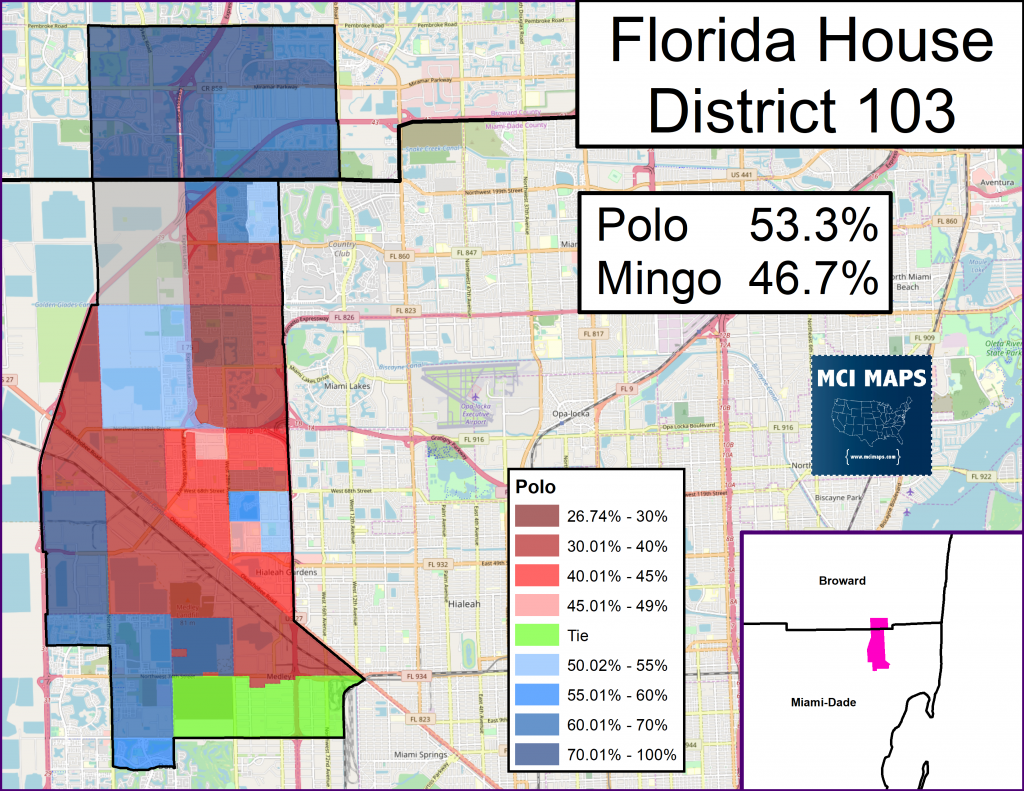
One Democratic incumbent loss did occur in Miami-Dade, however. Robert Asencio lost a close fight to Republican Anthony Rodriguez. Asencio had won this seat in 2016, narrowly edging out longtime ethically-tainted Republican David Rivera. Asencio was always a prime target by the GOP, and with the turnout favoring the GOP Hispanics in this majority-Hispanic, Cuban-heavy seat, Asencio got ousted in a seat that narrowly backed Nelson but also voted for Ron DeSantis.
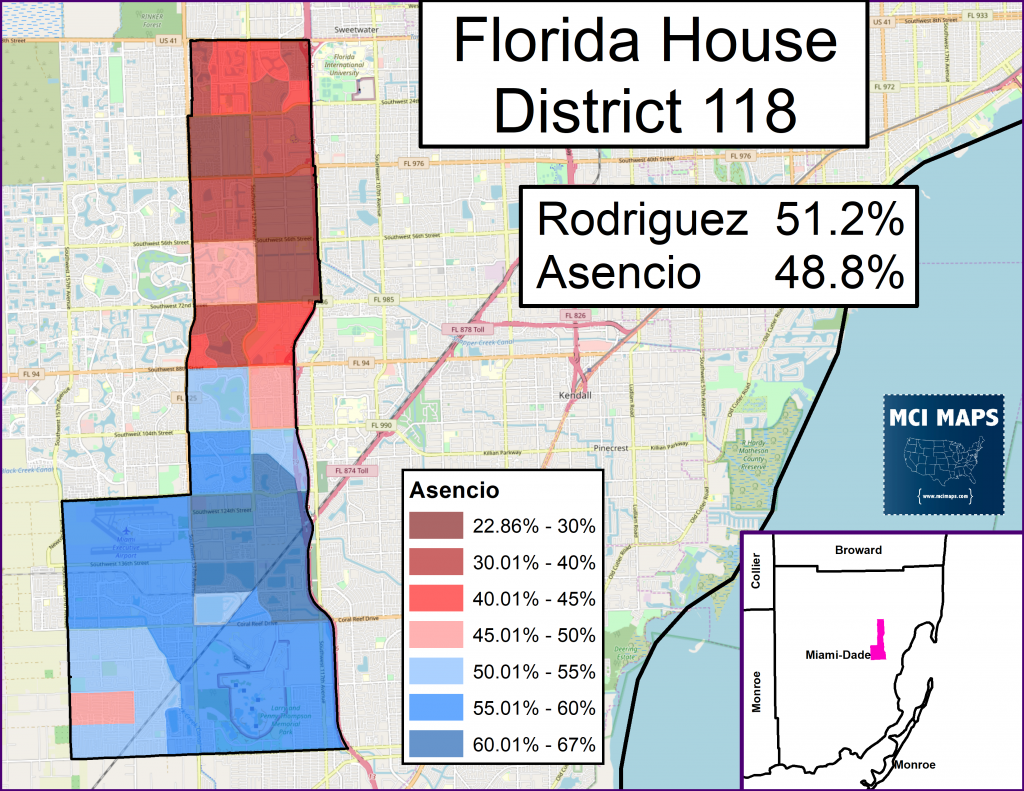
A good example of a Democrat loosing because of this failure to take a race seriously was incumbent Patrick Henry. By many accounts Henry was not taking the race seriously enough and had weak fundraising despite the seat almost going for Trump in 2016 and having a real GOP challenger in Elizabeth Fetterhoff. Despite four of five statewide democrats winning the seat, Henry lost by just a handful of votes.

There are also two Democratic holds worth noting.
In HD72, Democrat Margaret Good held on against former State Representative Ray Pilon. Good won the seat in a February special election, flipping the seat for the party in the process. She has since announced she will run for Congressional District 16 to face off against Verne Buchanan, who’s son she beat in the February special.
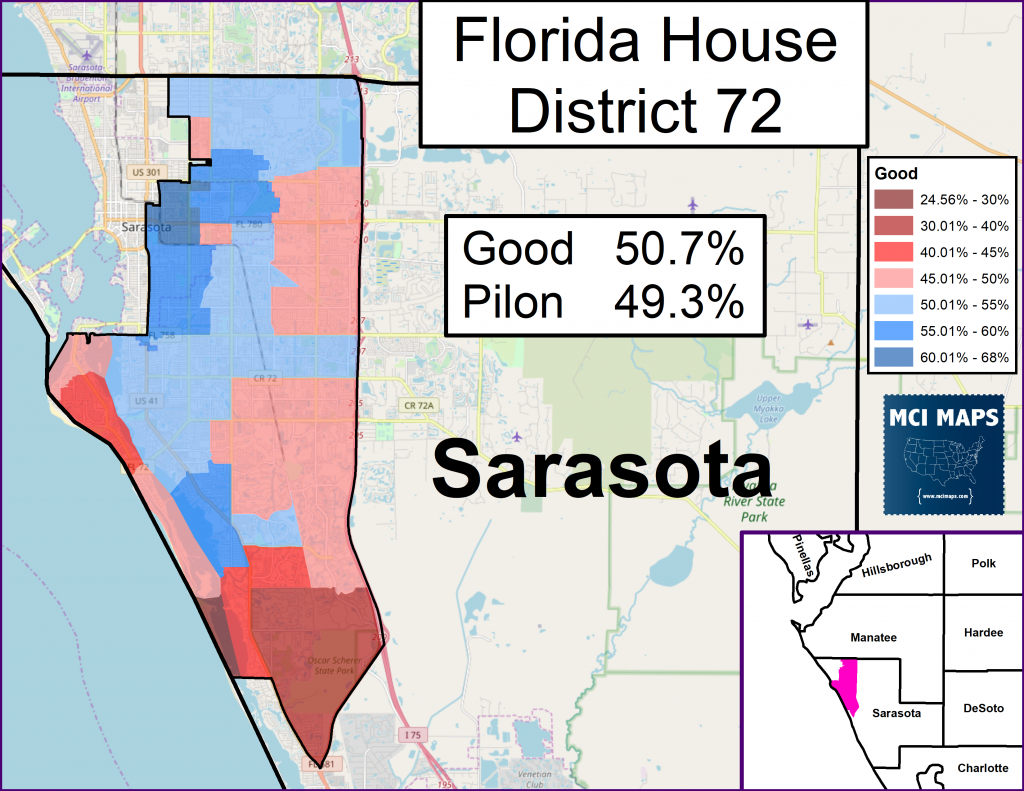
The other big Democratic hold was in HD114, where Incumbent Javier Fernandez held on after winning the seat in a special election earlier in the spring. Fernandez has since announced he will run for Senate District 39, a prime pickup opportunity for Florida Democrats.
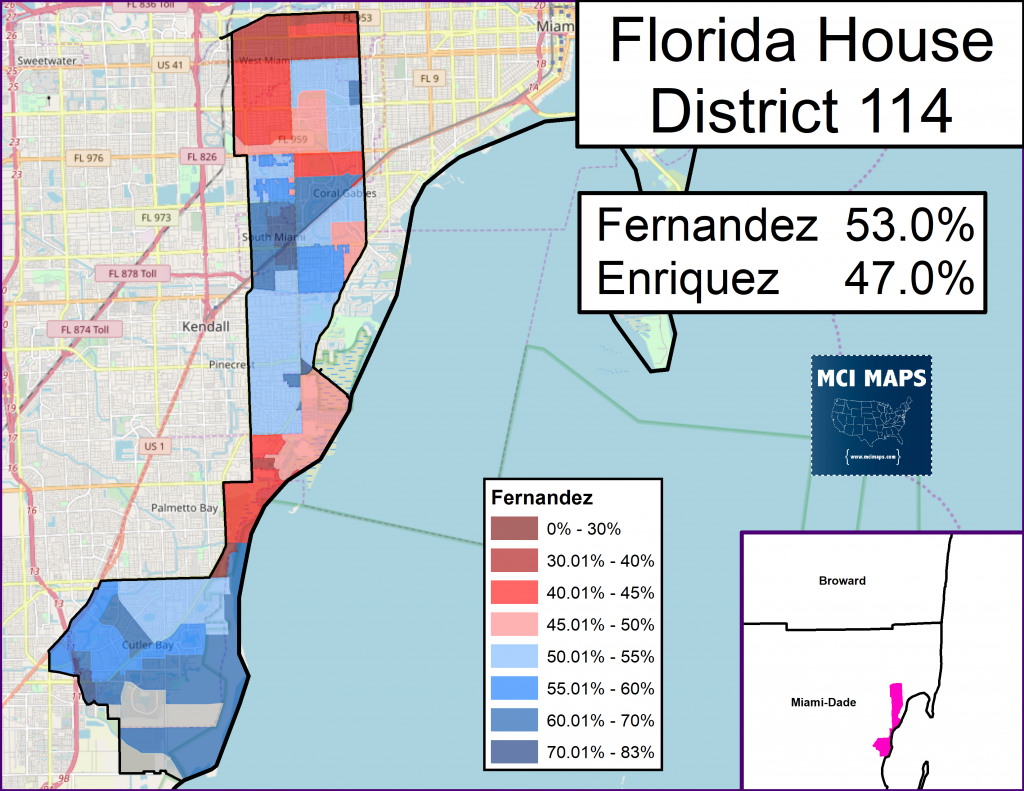
Conclusion
Democrats made some good gains in 2018, but there is still many opportunities left on the board. Seven seats are held by Republicans but were won by Andrew Gillum over Ron DeSantis.
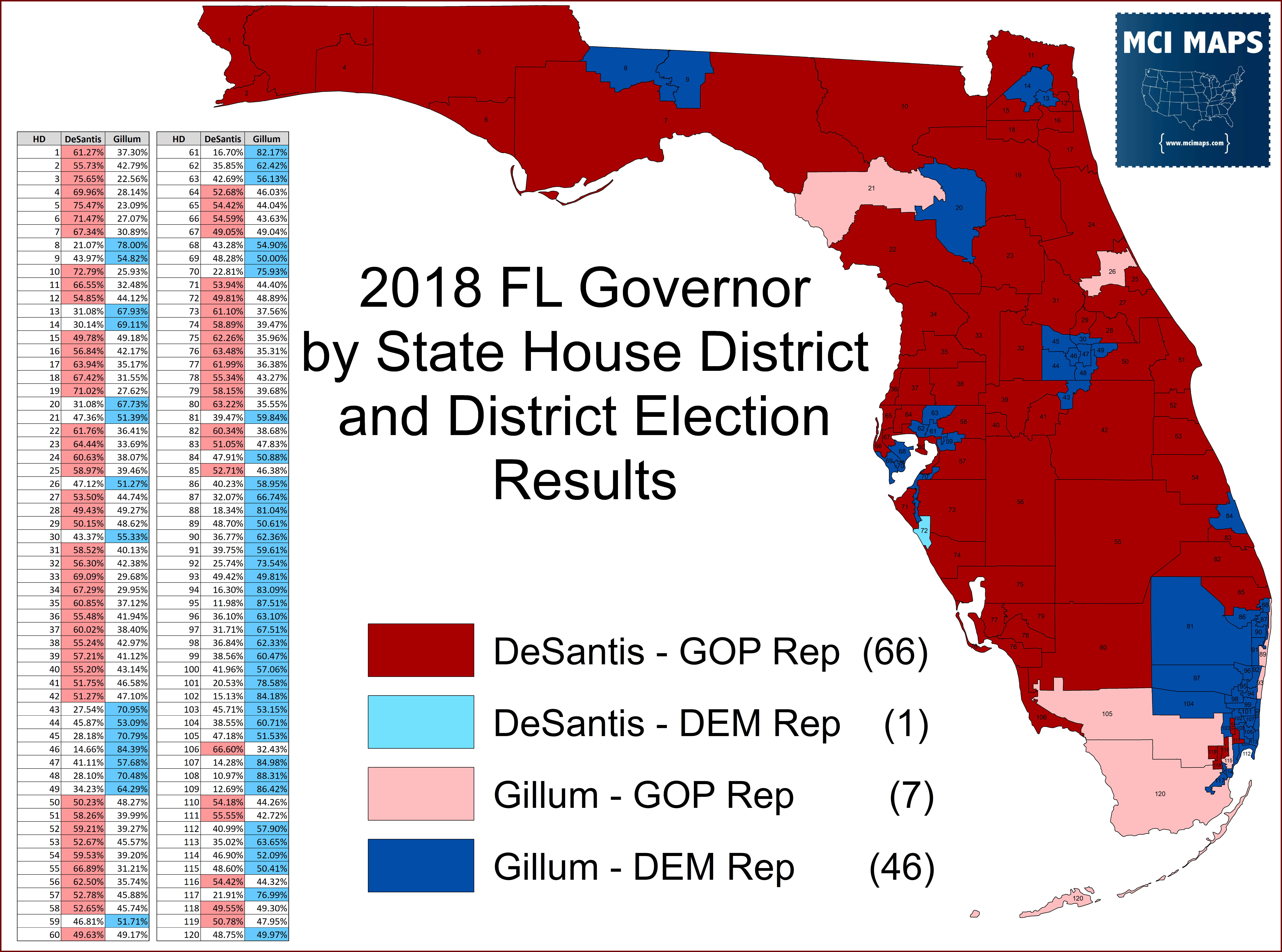
What is also notable is that many suburban regions that swung to the statewide democrats are still more GOP down-ballot. Most of the democratic candidate for house seats underperformed Gillum and other statewide democrats in their districts. Meanwhile many rural areas saw the local democrats perform better.
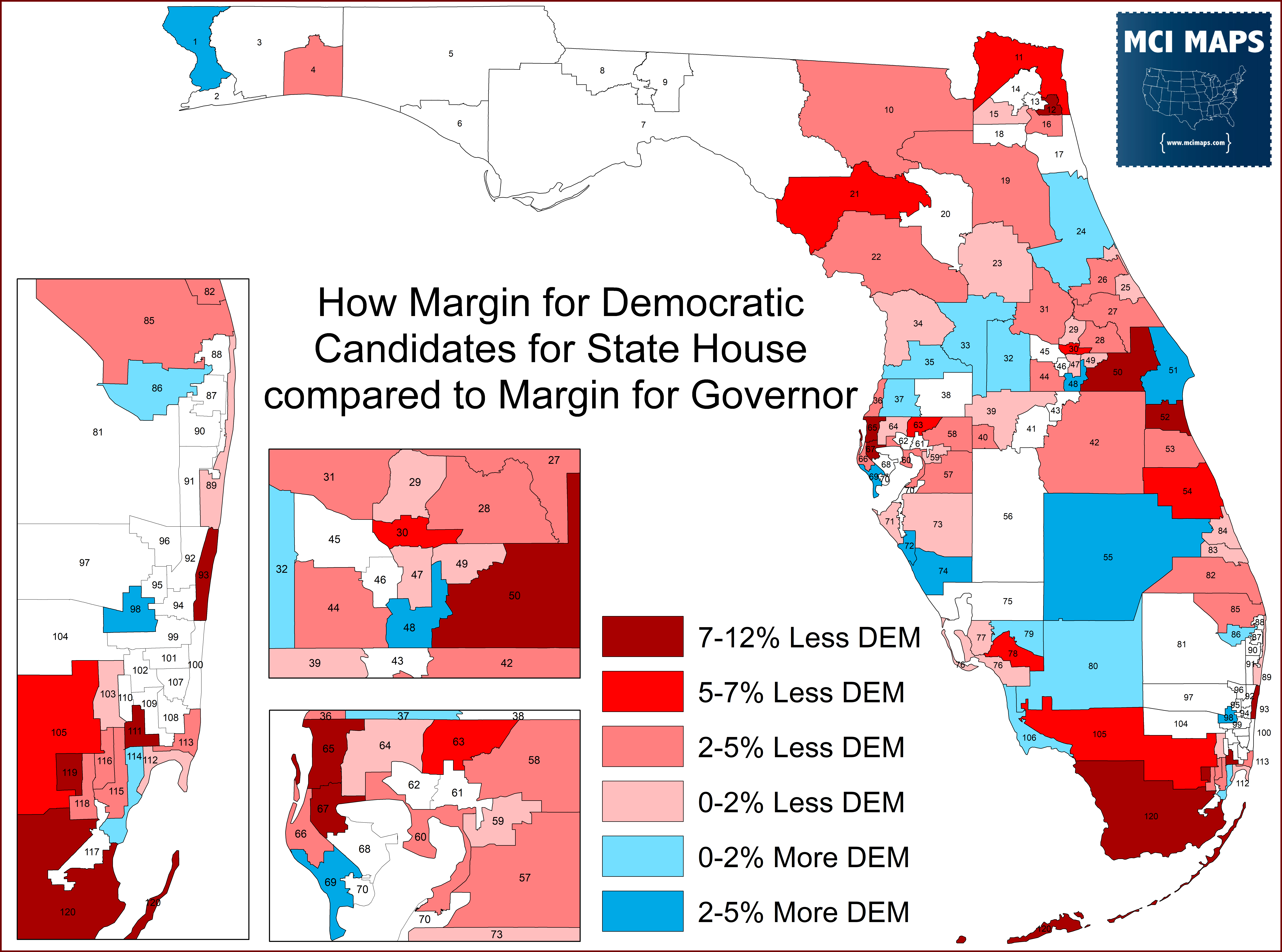
The GOP edge is of course strongest in Dade, where local Hispanic GOP tradition is still very strong.
Heading into 2020, there are four democrats in seats that Donald Trump won, granted all of these were by modest margins. Eleven Republicans sit in Clinton districts.

The state house races are just getting going. As with 2018, expect to see me give ratings for these races in October of 2020.


